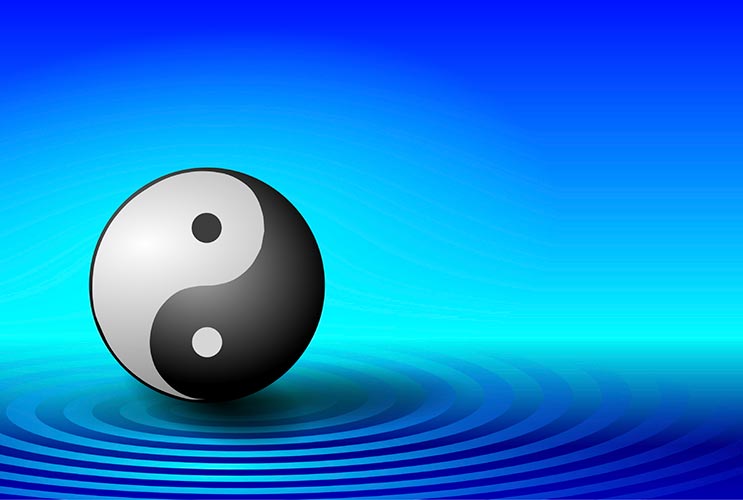
Often, we define peacefulness by the absence of stress—a neutral, inactive, state. However, is peace really just a passive state? For most people, adopting the life of a “Zen master” and dedicating endless hours to meditation simply isn’t an option. Interestingly enough, science is helping to define an active “peace state” that is achievable with just minutes of daily practice.
Read Related: Meditation on the Go: Mindfulness
Active peace can be described as an increased inner clarity, a feeling of inner calm, and a deeper sense of inner balance. This state of active peace is referred to as “psychophysiological coherence.” Science has shown a correlation between psychophysiological coherence and our ability to think, act, and decision-make. Cultivating coherence, or a deeper internal peace, can actually make us more efficient and more capable of experiencing a meaningful and connected life. The body responds favorably to the coherence state as well—emotional and mental states are revitalized, and the body’s immune and hormonal balance improves.
The most common obstacle that stands between more inner peace and us is stress. Our mental, emotional, and physical stressors push us further away from experiencing peace or achieving coherence. Many people feel the only way they can get relief from stress and feel more at ease is by taking a vacation, a morning to sleep-in, or a day at the spa.
Here are a few active steps that you can use to reduce stress and increase your peace starting right now.
CONTROL WHAT YOU CAN… AND BREATHE
We all have moments of worry, yet women tend to be bigger worriers than men. People often worry because they genuinely care. Yet our care is most effective when we are in balance—we think clearer, and we’re more creative and intuitive. Worry can become an unhealthy emotional habit that acts like a hole in your gas tank, draining your vital energy and certainly robbing you of peace.
Next time you find yourself in a mental loop of worry, take a timeout—stop and sit quietly for a just couple of moments. Take a few breaths, a little deeper than normal. Breathe in an attitude of “ease” and breathe out the feeling of worry. Do this for a few moments with the intention that you are creating a new habit of inner ease while letting go of that old unhealthy pattern of worry.
SHUT OFF THE INNER CHATTER
It’s surprising how much inner dialogue can run all day long without us even noticing, all the while depleting our inner peace. For many, inner chatter can consist largely of self-critical and self-judgmental comments. Unconstructive self-talk lacks the qualities of compassion, love and care, and it creates distance between you peace.
Play a personal game. Start with a 30-minute period of time (you can increase the duration or how often you do it as you desire) for this simple exercise to help build inner awareness. During the time period, pay attention to your inner dialogue. Watch for negative inner self-talk. For example, if the negative thought is, “I’m an idiot, I should know how to do this by now,” stop that thought and say, “This thought doesn’t serve me. Goodbye thought!” Then replace that old, negative view with a new, positive inner message adding a compassionate attitude like you would have with someone you love. A positive replacement message could be, “I’m still learning how to do this. No worries, I’ll get it down soon.”
It may feel a bit superficial to start, but the more you play with this simple practice, the more your feelings and thoughts start to align with a more positive and loving inner dialogue. This practice can help create a powerful and positive change that leads to more inner peace.
MATCH BODY AND MIND
You can actively make changes to your mental and physical state. Our mind and body are so interconnected that even our heart rhythms reflect our feelings. In fact, something like the Inner Balance app will teach you how to intentionally shift your heart rhythms to increase the peace you crave. The app uses a simple sensor that plugs into to your smartphone and connects to your earlobe. The app develops a breathing sequence to help you align your breath and heart rhythms. Apply the simple coherence building technique included in the app to help you focus on a positive emotion. The combination has proven to help reduce stress and increase coherence. Science has observed an important connection between your heart rhythms and emotions: demonstrating that when we shift our heart rhythms into coherence, our mental and emotional state can also shift. Coherence equals a more balanced and peaceful you.
CONNECT WITH PURPOSE AND PEOPLE
Connecting with others who share the desire to create more inner peace and give back to the world can increase your feelings of purpose, and in turn, inner calm. Consider signing up for a prayer group, yoga or meditation class—or think virtual. There are a growing number of online groups, such as the Global Care Room, a virtual hangout for people that want to pray, meditate, or exercise their practice of choice in order to gain inner peace and focus on positive intentions to benefit others. Volunteering is another way to feel more content and less stressed. By concentrating your attention on others who are less fortunate, your inner chatter will shift from being self-centered to more altruistic, as your focus shifts from centering on your worries to helping others. Organizations like Volunteer Match can provide opportunities in your area, or match you with organizations and volunteer opportunities based on an area of interest.
Remember: peace isn’t some idealistic, passive state that only some people gain because they’re the “lucky ones.” Yes, peace can be moments of quiet and stillness, but it can also be an active state—a state where the mind, heart and body are in balance as you’re actively living life. Reducing stress and worry, being more mindful of the inner chatter and practicing coherence are great strategies for increasing active peace. With a little practice and commitment to cultivate peace each day, you will start to see growth and discover what practices work best for you.
Dr. Deborah Rozman is President and CEO of HeartMath, which is widely recognized for its science-based solutions for stress, and personal wellness technology. HeartMath explores the scientific meaning behind internal “Zen” and how consumers can easily reduce stress while increasing internal happiness.












